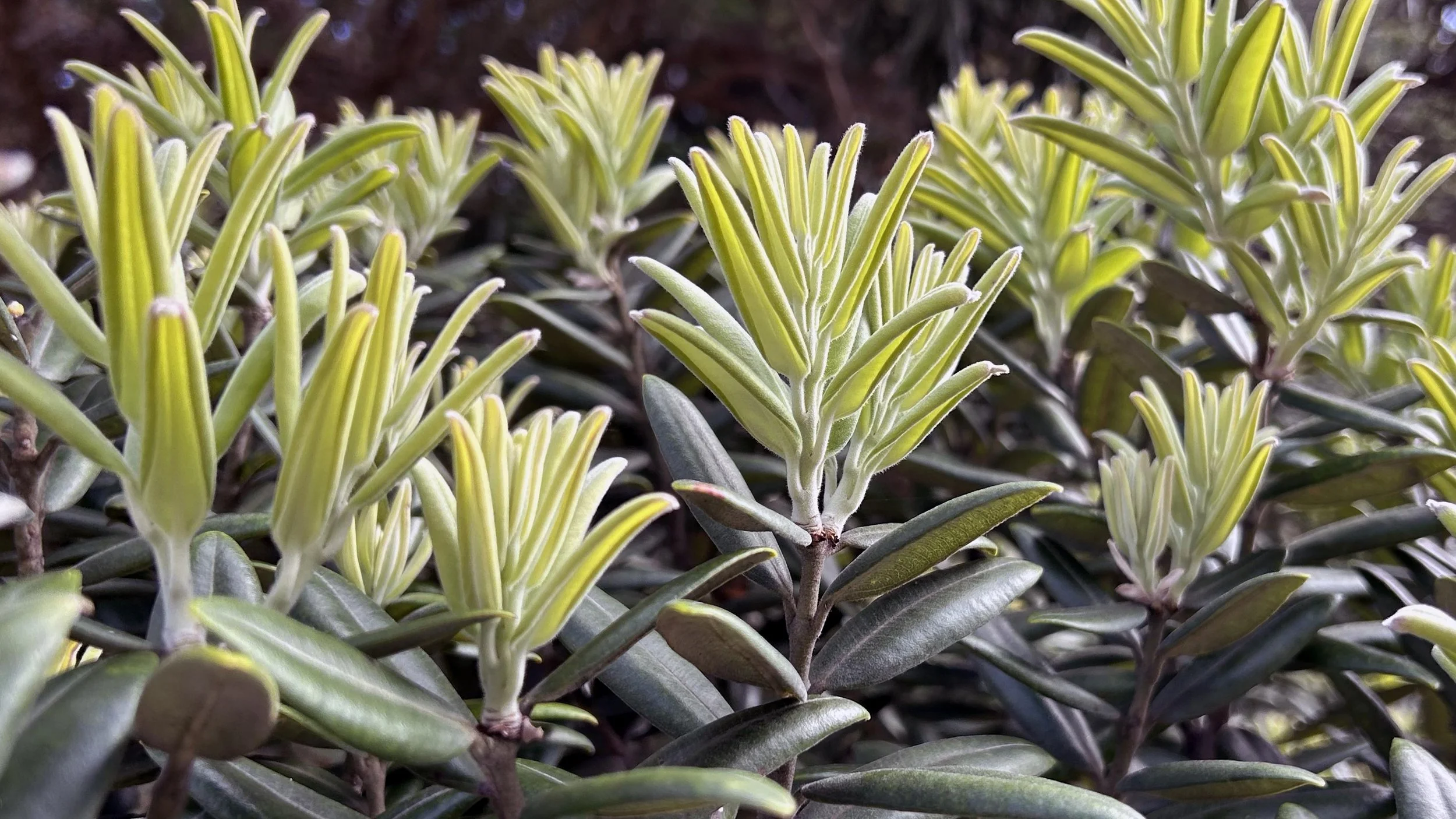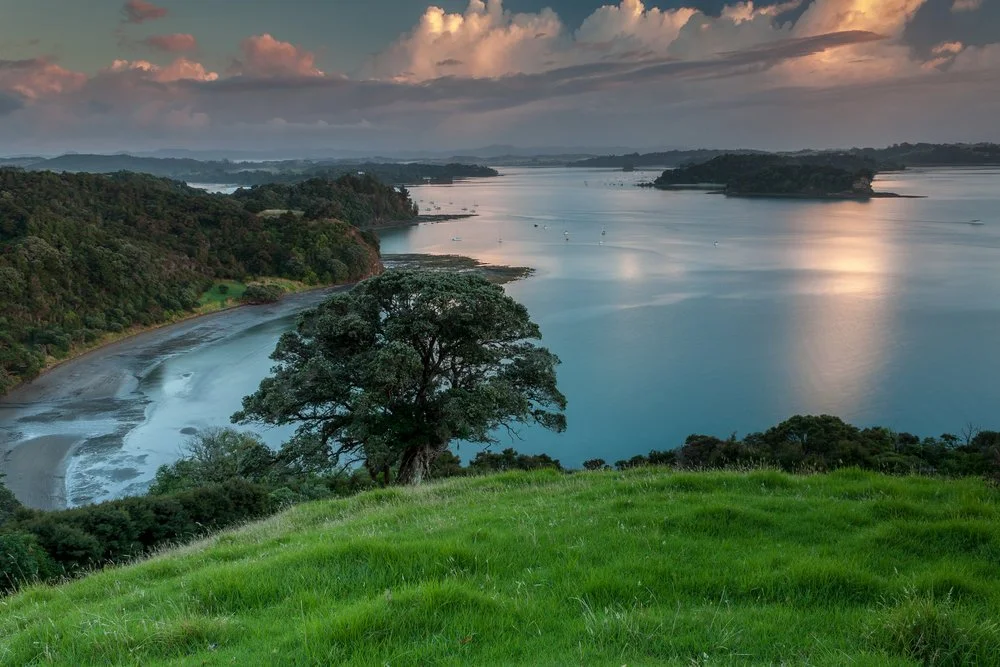
Our History
Te Iwi o Ngāti Rehua
The History of Te Iwi o Ngāti Rehua begins with Toi Te Huatahi, who arrived on the island of Aotea in the 12th Century on his waka Paepae ki Rarotonga, bringing with him the Tikanga of Hawaiki. His name is forever encapsulated within the islands of Te Moananui ā Toi (The Ocean of Toi) and Ngāti Rehua are his direct descendants.
Toi’s influence can be found in the name of Te Hauturu ā Toi (The Winds of Toi) which Captain James Cook renamed to Little Barrier Island and gave the name of Great Barrier Island to Aotea. Ngā Poitō ō te Kūpenga ā Toi is described in Ngāti Rehua’s kōrero, as the floats of the fishing net of Toi, these are the many islands and rocky outcrops located in Te Moananui ā Toi.
Ngā Taratara ā Toi are the pinnacles situated in the northern end of Aotea, known locally as “The Needles”. This is where the two moana, Te Moananui ā Toi and Te Moananui ā Kiwa, connect. The naming of the main island as Aotea is significant because it relates to the visit of the Aotea Waka in the 14th Century. Turi, the captain of the Aotea waka, named the Island - Aotea and his name remains at the southern end of the island at “Te Kurae ā Turi” aka Ōturi (Schooner Bay), Ngāti Rehua are his direct descendants.
Rangitāwhiri (Tryphena) holds significance as the place where Kupe, a renowned Polynesian explorer, was welcomed by the descendants of Toi (Ngā tini ō Toi). Kupe then travelled north to Ōkupe (Te ō a Kupe), where he re-lashed and reprovisioned his waka. The Takitimu Waka landed at Aotea on its long journey from Hawaiki, the Tōhunga Ruawharo constructed an altar, performed a karakia, and laid down the mauri for the whenua and moana.
This act symbolised the spiritual connection and protection of the surrounding environment and is still visible at Ōruawharo (Medlands) to this day. Tamatea the captain of the Takitimu Waka is among the ancestors of Ngāti Rehua.
Nga Taratara ā Toi
Te Rangitāwhiri
Ōkupe
Harataonga
Te Hauturu ā Toi
Around 1350, the Tainui Waka landed in the North of Aotea, when they came into the bay the crew on board squinted because of the brightness of the sun, which led to Hoturoa naming of the place as Motairehe. The crew of the Tainui Waka built an altar and laid down the mauri brought from Hawaiki leaving an anchor stone which remains visible to this day at Motairehe. Ngāti Rehua are direct descendants of Hoturoa the Captain of the Tainui Waka.
Rehua, was born at Whangaparāoa in the 17th Century. Rehua’s father, Mataahu, was the younger brother of Maki (Chief of Te Kawerau ā Maki) and was an integral part of the conquest of West Auckland, Northshore and Mahurangi, also he led the conquest and occupation of Hauturu building multiple pā sites and is buried on Hauturu at a grove of Pohutakawa trees on the southern end of the island named Ngā Pua o Mataahu. Rehua’s Mother Kura was a woman of prestige from the local Iwi Ngā Oho who were the original inhabitants of Whangaparāoa. Rehua was named in honour of the Atua (Māori God) of the Stars, who was the eldest son of Ranginui (Sky Father) and Papatūānuku (Earth Mother) along with his Kawerāu ancestry is a direct descendant of Toi te Huatahi, Hoturoa (Captain Tainui Waka), and Turi (Captain of the Aotea Waka). Rehua was raised at Korotangi (present day Opahi Bay) in the Mahurangi and had close whānaungatanga with his cousins who became the leaders of the other Iwi of Te Kawerau ā Maki including Maraeariki, Manuhiri, Tawhia ki te Rangi and Ngawhetu.
Rehua, and his son Te Rangituangahuru led a Te Kawerau war party from the Mahurangi to conquer Aotea starting with Ngāti Te Hauwhenua who lived in the North of Aotea. Bad weather caused a supporting Ngāti Manaia war party led by Te Whaiti and Te Awe to arrive late but they were there for the final battle. A meeting was called, by the chiefs of the two remaining Hapū of the island, Taipikingarangi of Ngāti Te Wharau and, Mataa of Ngāti Taimanawaiti.
Hirakimata
Shakespear Park - Whāngaparāoa
Ōruawharo
In pursuit of peace, Mataa gifted his sister, Waipahihi, to Rehua, and Taipikingarangi offered his daughter Rangiarua to Te Rangituangahuru. These two marriages connected the leaders of Ngāti Rehua to the people of Toi that held the ahi kaa roa on Aotea. Rehua and Waipahihi settled on Rakitu Island while Te Rangituangahuru and Rangiarua returned to Hauturu.
Mataa, who was both aggrieved after the previous conflicts and frightened that Rehua would strike again, decided to attack first, resulting in Rehua being burnt alive in his house while he was sleeping, lightning struck the face of the highest mountain on Aotea which became known as Hirakimata.
After the death of Rehua, his son Te Rangituangahuru who was living at Mahurangi at the time wanted vengeance. Harataonga on the east side of Aotea is named after the ‘hara’ Te Rangituangahuru felt at the death of his father. Te Rangituangahuru led a war party of Te Kawerau from Mahurangi supported by Te Awe’s war party from Ngāti Manaia to attack Ngāti Taimanawaiti and Ngāti Te Wharau ending with the death of Mataa and the occupation of the Southern end of the Island. This conquest became known as Te Kahukura ō Te Rangituangahuru or “The Red Cloak of Te Rangituangahuru”.
Following the conquest Te Rangituangahuru and his army reoccupied all former territory held by his father and established major pa sites at Kawa, Rakitu, Rangitāwhiri, Whangapoua and on Hauturu.
Te Kurae ā Turi
Mahurangi
Rakitu
After this battle, all rights of the people of Toi Te Huatahi that were held by Ngāti Taimanawaiti and Ngāti Te Wharau were transferred to the people of Ngāti Rehua who became the sole Mana Whenua and Iwi of the Island consisting of two Hapū “Te Uri ō Te Rangituangahuru” and “Te Uri ō Te Ikamimirua”. Te Awe chose to join with Te Rangituangahuru’s Hapū and became one people. The only living descendants of Te Awe alive today are “Te Uri ō Te Rangituangahuru”.
Twenty years after the conquest of Aotea, tensions arose between Ngāti Rehua and the Marutūahu Iwi resulting in agreat battle on the Coromandel Peninsula where the war party led by Te Rangituangahuru and Te Ikamimirua was victorious. As a way of keeping the peace, a marriage was arranged between Te Rangituangahuru’s daughter Rurukaiapū and Marutūahu’s grandson Tarawaikato. All living members of “Te Uri ō Te Rangituangahuru” whakapapa to Marutūahu through this union.
In the 18th Century, Ranginui a warrior from Whangaruru supported Ngāti Rehua in an important battle, as a reward he was gifted a small tuku whenua at the Southern end of Aotea.
Ranginui was of “Ngāti Wai” heritage through his ancestor Manaia and “Te Kawerau ā Maki” as he was a direct descendant of Manuhiri the son of Maki. Over time deep connections formed between the two groups, leading to all living descendants of Ngāti Rehua having whakapapa to Ngāti Wai and Ngāti Manuhiri through Ranginui.
In 1838, a great battle between Ngāti Rehua and Marutūahu versus Ngāti Kahungunu and Ngāti Porou occurred at Whangapoua resulting in a great victory for Ngāti Rehua. Kewene Tamakore a warrior from Ngāti Porou remained on Aotea and joined with Ngāti Rehua, as a result of this union all living descendants of “Te Uri ō Te Rangituangahuru” whakapapa to Tamatea and Ngāti Porou.
Ngāti Rehua continue to live in various locations and small islands around Aotea including two marae at Kawa (Te Uri ō Te Rangituangahuru) and Motairehe (Te Uri ō Te Ikamimirua). We have a rich history and continue to have close Whānaungatanga through whakapapa to other Iwi such as Ngāti Wai, Marutūahu and Ngāti Manuhiri. To Ngāti Rehua, Aotea and its surrounding islands and connecting waters are a unified and living entity that our people have had a continued unbroken connection to “ahi kaa roa” for over 800 years from the time of Toi Te Huatahi to the present day.
Te Tara o te Ika a Maui
Whangaruru
Whangapoua














